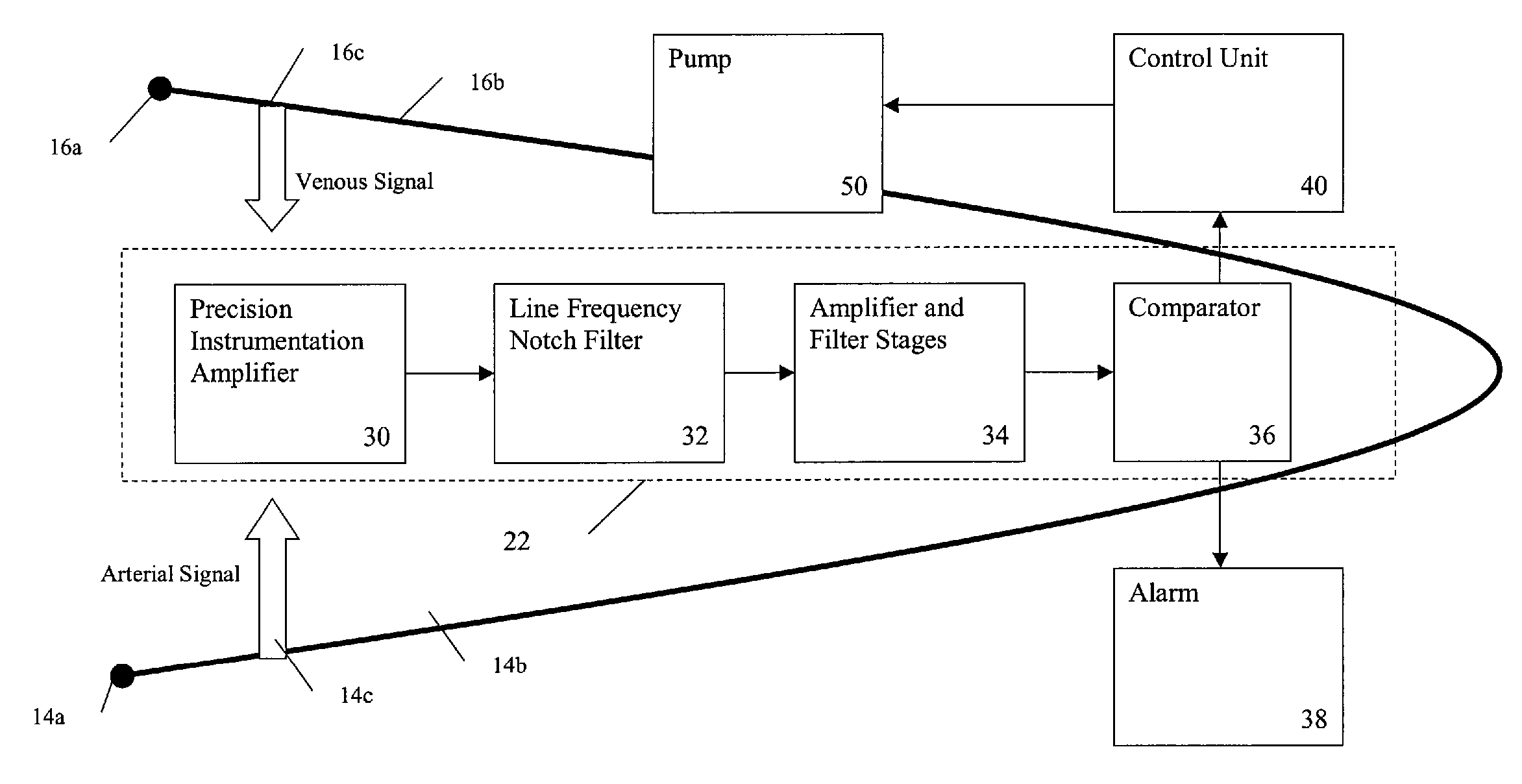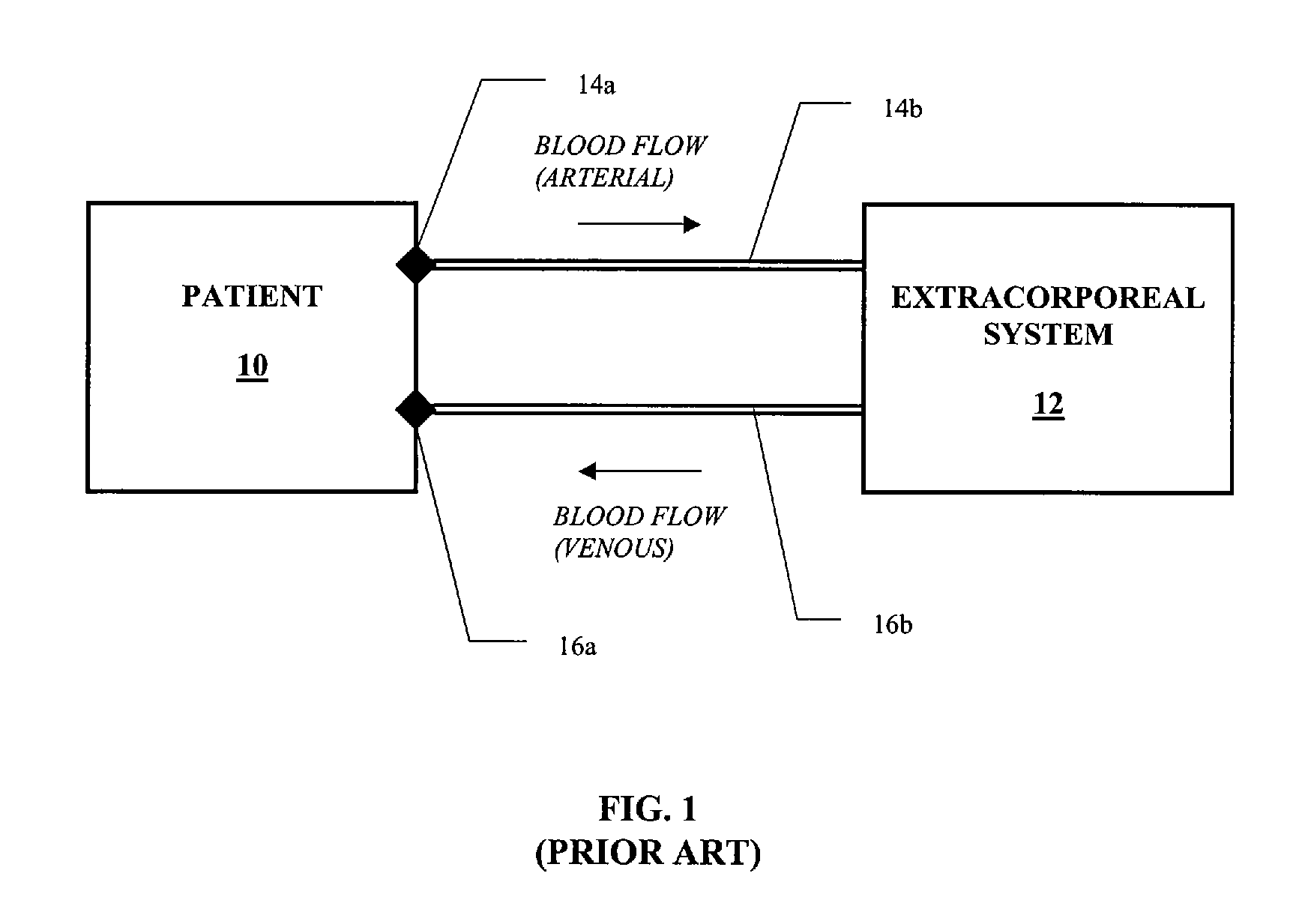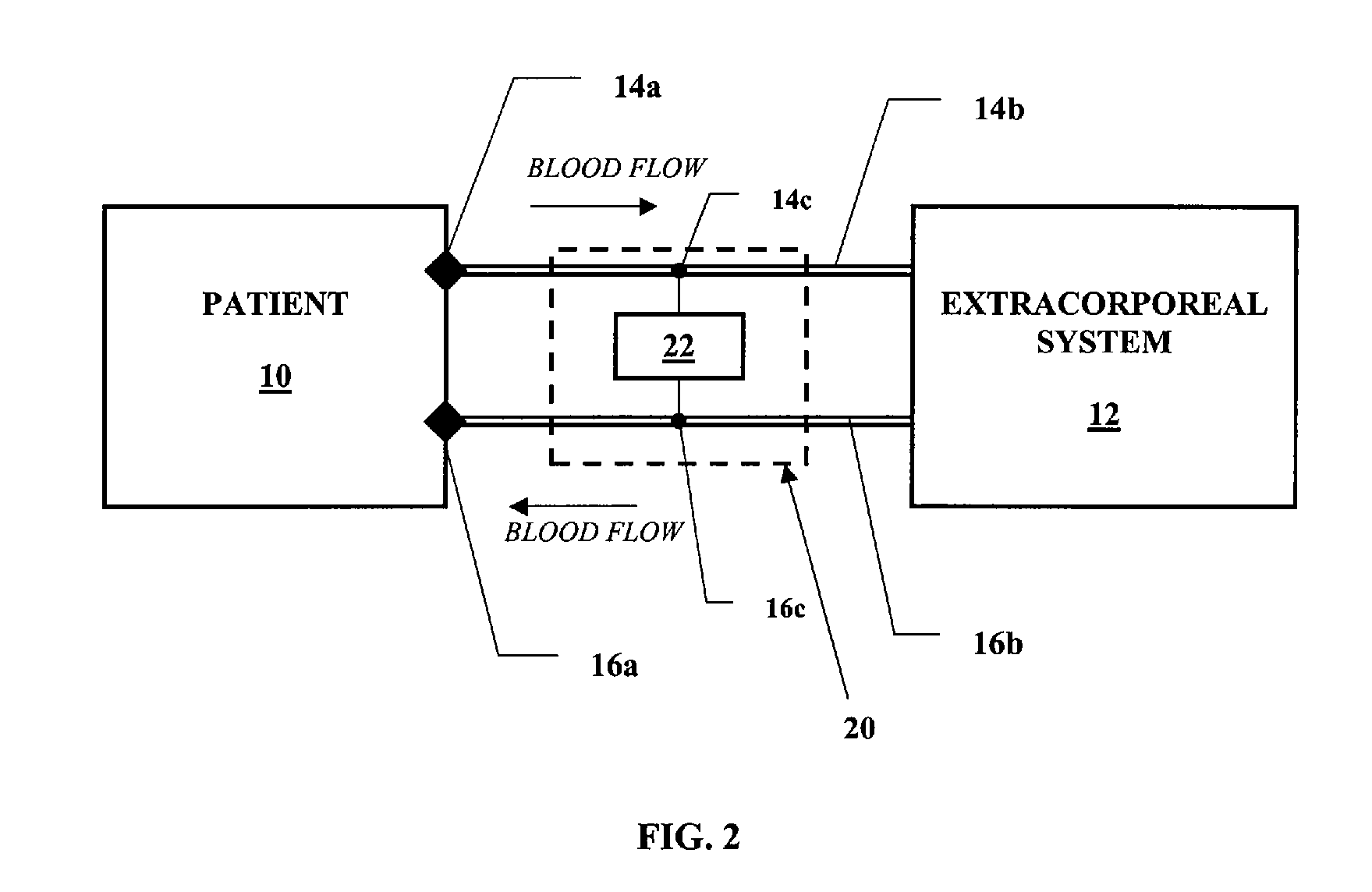Method for detecting the disconnection of an extracorporeal device using a patient's endogenous electrical voltages
a technology of endogenous electrical voltage and detection method, which is applied in separation processes, centrifuges, instruments, etc., can solve the problems of multiple liters of hemorrhage, stroke or even death, blood loss, etc., and achieves the effects of low impedance, higher impedance characteristics, and greater dissimilarity
- Summary
- Abstract
- Description
- Claims
- Application Information
AI Technical Summary
Benefits of technology
Problems solved by technology
Method used
Image
Examples
Embodiment Construction
[0040]Referring now to the drawings, the preferred embodiment of the present invention will be described. The fluid referenced in the embodiments herein comprises blood and the extracorporeal system includes, for example, a hemodialysis device. However, the invention would also be applicable to other fluids and blood components transmitted via tubing, and other extracorporeal devices, as known in the art.
[0041]FIG. 1 illustrates a schematic view showing two needles 14a, 16a insertable within a patient 10 through which blood flows to (first needle / arterial needle 14a) and from (second needle / venous needle 16a) an extracorporeal system 12 of the prior art through first tubing / “arterial” tubing 14b carrying blood away from the patient and second tubing / “venous” tubing 16b carrying blood back to the patient. Significant morbidity or mortality can result from hemorrhage when extracorporeal therapeutic devices incorporating blood pumps are accidentally disconnected from patients. During h...
PUM
| Property | Measurement | Unit |
|---|---|---|
| pressure | aaaaa | aaaaa |
| pressure | aaaaa | aaaaa |
| pressure | aaaaa | aaaaa |
Abstract
Description
Claims
Application Information
 Login to View More
Login to View More - R&D
- Intellectual Property
- Life Sciences
- Materials
- Tech Scout
- Unparalleled Data Quality
- Higher Quality Content
- 60% Fewer Hallucinations
Browse by: Latest US Patents, China's latest patents, Technical Efficacy Thesaurus, Application Domain, Technology Topic, Popular Technical Reports.
© 2025 PatSnap. All rights reserved.Legal|Privacy policy|Modern Slavery Act Transparency Statement|Sitemap|About US| Contact US: help@patsnap.com



